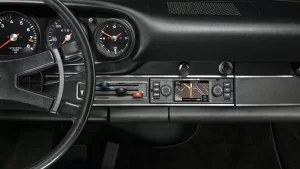
Common Car Repairs You Can Do Yourself to Save Money
Maintenance services such as oil changes and tire rotation can save money over time. Reading your vehicle owner’s manual and following its suggested maintenance schedule could prevent costly issues in the future.
Fixing a burned-out headlight or replacing a damaged windshield wiper blade is also an easy DIY repair project.
Brake Pads
Brake pads are essential components to keeping your car secure on the road. They consist of steel backing plates which use friction to convert kinetic and thermal energy into stopping power, without which you would be in big trouble.
Replacing brake pads yourself can be done easily and cost-effectively, eliminating the need to visit a mechanic. Although it involves some preparation work and tools, replacing brake pads is generally considered an entry-level repair job.
Before beginning work on your vehicle, ensure it has been sufficiently cooled down. Since you will be dealing with hot calipers and rotors, it’s essential not to overheat them. Loosen the lug nuts on one of your front wheels using jack stands as support; then remove its tire. Most modern vehicles feature sliding caliper assemblies which are held in place by two bolts; some manufacturers provide wear indicators consisting of thin strips of soft metal which emit high-pitched squeals when their pads become low enough.
Air Filter
Your car relies on air to run, which must first pass through an engine filter before entering the combustion process. Filters should be changed every 30,000 miles – an easy job most people can perform themselves to save money at the mechanic.
Start by allowing the engine to cool before opening up the hood and beginning work. Next, locate and unbolt or unsnap any snap-in or screw-in fasteners holding down your air filter housing (usually located above or to one side of the motor) then take steps to dislodge it from its mounting. Be mindful of their orientation once reassembling them into their positions!
Replace the old filter with a new one and snap or screw back its housing into place. Additionally, it would be wise to clean out and clear out your old filter housing before inserting your new one, as it may contain dirt and debris which could affect its performance over time.
Spark Plugs
An automobile engine may appear complex and indecipherable at first glance, but there are plenty of easily serviceable parts. Spark plugs are among the first parts to wear out – replacing them is a relatively straightforward job that can easily be accomplished at home with basic hand tools and the appropriate spark plugs and wires for your vehicle.
Before starting, ensure the battery is disconnected and that your engine has fully cooled down. Also place a towel or blanket over fender edges as you lean into engine bay to access spark plugs and wires for removal or installation. Before beginning work on your spark plugs and wires, consult your owner’s manual for instructions regarding location and gap size of each individual spark plug; once ready to remove or install new spark plugs with care while labelling each wire carefully as well as using a spark plug gap gauge to check that all necessary ones exist correctly.
Tires
Tires play an integral role in your vehicle’s handling and performance, yet can be costly to replace after a blowout or wear damage. The good news is that most tire replacement jobs can be completed at home by you!
Start by checking your tire air pressure with a tire gauge to make sure they meet the manufacturer’s recommended settings. Check them again after driving for some time as heat generated while driving can obscure low pressure levels.
Next, establish the habit of rotating your tires regularly. Doing this helps even out wear and tear on the treads, increasing tire life while saving gas money in the process. Additionally, this strategy may save money.


